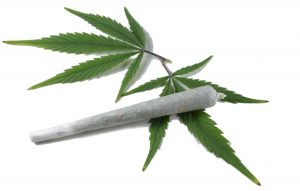While it may seem a question of semantics, there’s a big difference between decriminalizing and legalizing marijuana. And our kids’ health could be at stake if we blur the lines.
 The federal government is planning to legalize marijuana, making it akin to alcohol and tobacco — a legal but regulated substance that’s kept away from youth. The Task Force on Marijuana Legalization and Regulation is asking for your opinion on the best way to do this, and Monday is the last day to give your input.
The federal government is planning to legalize marijuana, making it akin to alcohol and tobacco — a legal but regulated substance that’s kept away from youth. The Task Force on Marijuana Legalization and Regulation is asking for your opinion on the best way to do this, and Monday is the last day to give your input.
I’ve studied the effects of drugs on health for many years — as well as how drug policy decisions affect use. And I think legalizing marijuana now will be bad for our kids’ health.
Legalization is reasonable in theory, but if you take a closer look — both at our failure to curb underaged drinking, and at early findings about marijuana use in places where it’s been legalized — it raises troubling questions.
First of all, alcohol regulation is not the most reassuring model. Our attempts to prohibit underage drinking have been far from successful. A recent study found that 74 per cent of Grade 12 students in Ontario report drinking alcohol in the past year — and 20 per cent reported binge-drinking in the past month. Impaired driving is also a major problem for this age group, too often with fatal results.
Just as we haven’t figured out how to stop kids from drinking alcohol, we don’t yet know how to deter them from smoking pot. One thing that has been shown to help, however, is attitudes based on accurate knowledge about its health effects. Kids who are aware of health risks tend to avoid marijuana.
It being illegal also seems to deter at least some people.
While we can’t make any definitive conclusions yet, early figures in Colorado suggest marijuana use has gone up substantially after legalization. But it hasn’t gone up in places like Australia, Portugal and certain U.S. states, where marijuana has been decriminalized but not legalized — where simple possession of the drug doesn’t result in a criminal record, but selling it remains illegal. This seems to show that most people are influenced by the fact that society deems the drug to be unsafe.
We have to remember that medical use and nonmedical use are really separate issues. Yes, marijuana has some medicinal properties, such as relief of pain, nausea and vomiting, and stimulation of appetite, and it has a legitimate place in health care — just as opiates, stimulants and many other drugs do. But we distinguish between medical and nonmedical uses for those drugs, and there’s no reason we can’t do the same for marijuana. It can continue to be used as a prescription drug, even if we don’t legalize nonmedical use until we know how to keep it out of the hands of kids and teenagers.
One of the most disturbing effects of marijuana is its actions on kids’ developing brains. In a major study in New Zealand, researchers followed over 1,000 newborns through childhood, adolescence and into middle age. Those who started smoking marijuana early, at around 12 years old, and continued the habit into their adult years had a decreased IQ later in life. The same effect was not found for those who started using the drug as adults.
We’ve found similar results in experimental studies in the lab. Cannabis prevents nerve pathways from maturing in areas of the brain known to be involved in “executive functioning.” This maturing process occurs in our adolescent years, and helps us with planning, reasoning, problem-solving and decision-making.
In the New Zealand study, this was reflected among the early users in poor school performance, higher dropout rates and reduced career achievement — even when controlled for socioeconomic status and other potential confounding factors.
To me, this is the most worrisome risk of marijuana. There are also, of course, concerns about accidents, respiratory problems and other health issues. After all, smoke is smoke. We don’t have a clear answer about lung cancer yet, and the fact that many people who smoke marijuana also smoke tobacco makes it hard to determine. But the detrimental effect on the developing brain shouldn’t be taken lightly when youngsters make up about 40 per cent of users.
We can still use and study marijuana as medication. We can decriminalize possession, to reduce the social harm suffered by those convicted for simple possession, while watching carefully what happens in places that have already legalized. And we can do much-needed research on how to make kids more aware of the risks of early use. The government would stand to benefit from increased tax revenue by legalizing sale (even if the black market would not be wiped out, as youth would still rely on unofficial sellers).
But if legalization threatens to increase marijuana use among adolescents, the group most at risk of long-term harm, that should give us pause.

